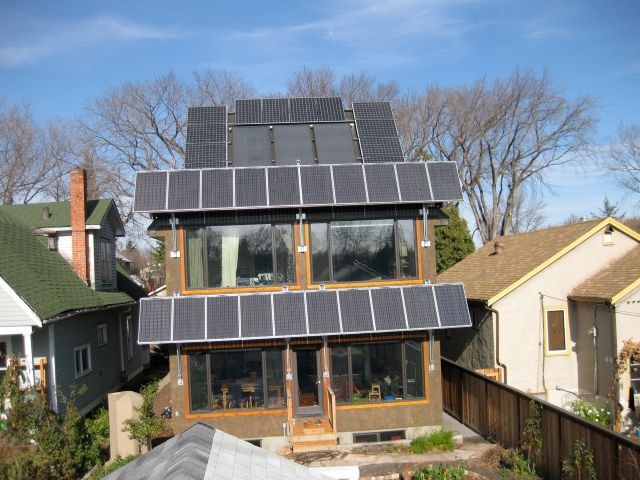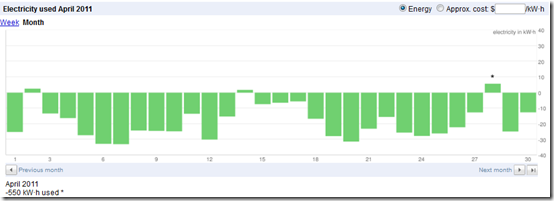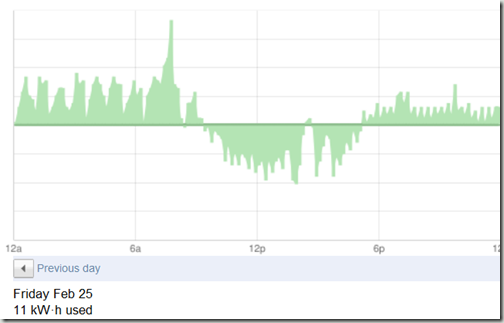
We tested our Net Zero home from October 18, 2010 to October 18, 2011. The initial post is here, and these are the questions that we wanted to answer.
The bottom line is that our house did not produce as much energy as it used throughout the course of the year. It was not a net zero energy house during the period indicated. Here are the numbers:
Net energy use: 2518 kWh
We used 2518 kWh more than we produced over the year for all of our energy needs (that's all electricity, as we are not connected to natural gas and we didn't use our wood stove at all).
Total solar production: 7212 kWh
Our solar modules produced at a decent clip, although at slightly lower-than-average levels for Edmonton.
Total energy consumption: 9730 kWh
So what happened? Well, as I said at the outset, we didn't define Net Zero before we started out. Net Zero every year? On a ten year average? What we do know is that this year, we didn't hit our goal.
Here's a bit of post mortem analysis.
- This house is clearly not going to be net zero every year. We missed by a relative long shot. Why?
- It was almost 14% colder than average in the fourth quarter of 2010 (source).
- It was overcast for virtually the entire month of March (as evidenced by my whining in this post). In March of 2010, we didn't heat at all, whereas in March 2011 we heated the house every day.
- Given the year that we had, the HOT 2000 simulation only predicted about half of our heating energy use.
- Given the two points above, I'm confident that our house will be net zero some years. Whether that's 20% of the time or 50%, it's impossible to say right now.
- The average house (built between 1990 - 2003) in Edmonton uses 41,665 kWh for space heating and hot water (or 150 GJ - pdf source) , and another 7800 kWh in general electricity use (pdf source). That's 49,465 kWh in total.
- So, our house used 19.8% of the energy that a newer Edmonton home uses, and it then turned around and produced 75% of that energy as solar electricity.
It was interesting to watch how the house performed this past year. We're still sworn off of the wood stove, so I'll check in again on December 14 and we'll see how close we'll have got to net zero when measuring Dec 14, 2010 - Dec 14, 2011 (after all, if you're not happy with the data, just change the parameters!).
Edit: below are the heating degree numbers for the last 12 months. As you can see, there was a lot more heating required in Edmonton during the last 12 months than during the period of Nov 2009 - Nov 2010. Especially in March!








